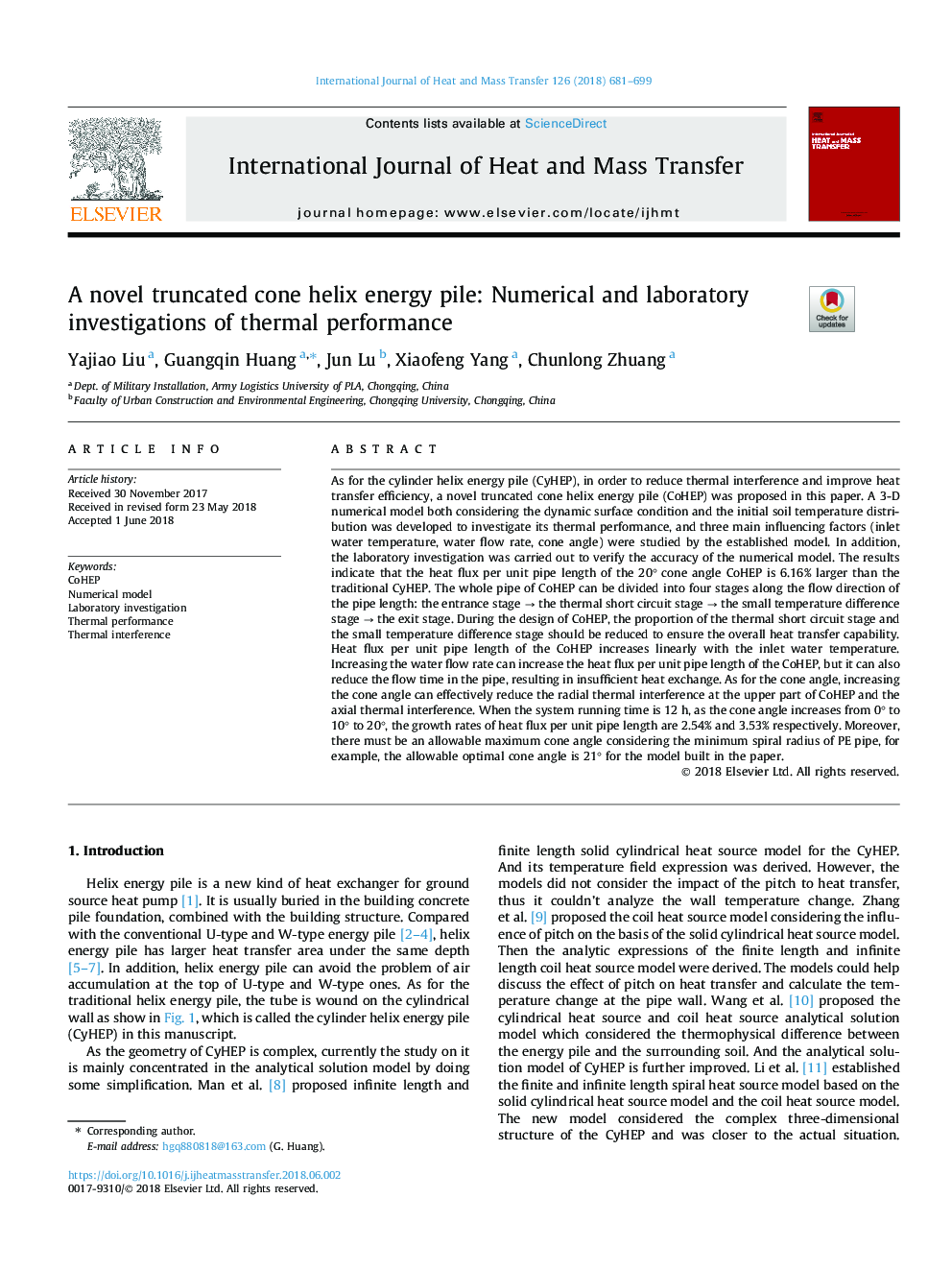| کد مقاله | کد نشریه | سال انتشار | مقاله انگلیسی | نسخه تمام متن |
|---|---|---|---|---|
| 7053902 | 1458013 | 2018 | 19 صفحه PDF | دانلود رایگان |
عنوان انگلیسی مقاله ISI
A novel truncated cone helix energy pile: Numerical and laboratory investigations of thermal performance
ترجمه فارسی عنوان
شمع انرژی شمع مخروطی جدید: بررسی عددی و آزمایشگاهی عملکرد حرارتی
دانلود مقاله + سفارش ترجمه
دانلود مقاله ISI انگلیسی
رایگان برای ایرانیان
کلمات کلیدی
موضوعات مرتبط
مهندسی و علوم پایه
مهندسی شیمی
جریان سیال و فرایندهای انتقال
چکیده انگلیسی
As for the cylinder helix energy pile (CyHEP), in order to reduce thermal interference and improve heat transfer efficiency, a novel truncated cone helix energy pile (CoHEP) was proposed in this paper. A 3-D numerical model both considering the dynamic surface condition and the initial soil temperature distribution was developed to investigate its thermal performance, and three main influencing factors (inlet water temperature, water flow rate, cone angle) were studied by the established model. In addition, the laboratory investigation was carried out to verify the accuracy of the numerical model. The results indicate that the heat flux per unit pipe length of the 20° cone angle CoHEP is 6.16% larger than the traditional CyHEP. The whole pipe of CoHEP can be divided into four stages along the flow direction of the pipe length: the entrance stageâ¯ââ¯the thermal short circuit stageâ¯ââ¯the small temperature difference stageâ¯ââ¯the exit stage. During the design of CoHEP, the proportion of the thermal short circuit stage and the small temperature difference stage should be reduced to ensure the overall heat transfer capability. Heat flux per unit pipe length of the CoHEP increases linearly with the inlet water temperature. Increasing the water flow rate can increase the heat flux per unit pipe length of the CoHEP, but it can also reduce the flow time in the pipe, resulting in insufficient heat exchange. As for the cone angle, increasing the cone angle can effectively reduce the radial thermal interference at the upper part of CoHEP and the axial thermal interference. When the system running time is 12â¯h, as the cone angle increases from 0° to 10° to 20°, the growth rates of heat flux per unit pipe length are 2.54% and 3.53% respectively. Moreover, there must be an allowable maximum cone angle considering the minimum spiral radius of PE pipe, for example, the allowable optimal cone angle is 21° for the model built in the paper.
ناشر
Database: Elsevier - ScienceDirect (ساینس دایرکت)
Journal: International Journal of Heat and Mass Transfer - Volume 126, Part B, November 2018, Pages 681-699
Journal: International Journal of Heat and Mass Transfer - Volume 126, Part B, November 2018, Pages 681-699
نویسندگان
Yajiao Liu, Guangqin Huang, Jun Lu, Xiaofeng Yang, Chunlong Zhuang,
